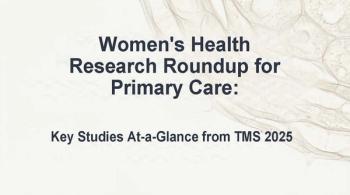
COVID-19 Vaccine Risk Presented in Context Could Improve Uptake
Pair the risk of side effects associated with a COVID-19 shot with the risk of death in a car accident and see what happens. It worked in this study.
Strategies that frame the risk for COVID-19 vaccination side effects in the context of other recognized and known risks can increase patient’s intention to get the vaccine, according to findings of a study conducted in the US and the UK.
The researchers believe the findings could help inform public health campaigns targeting the uptake of COVID-19 booster shots—currently far below desired levels.
The authors write that vaccination rates have slowed in both the US and the UK where approximately 64% and 71% of the populations, respectively, are fully vaccinated. Booster rates are even lower. As of February 2022, just slightly more than one-quarter (27.1%) of US and half (55%) of UK adults had received a booster. This level of immunization has been insufficient to prevent COVID-19 spread, they add, and particularly the Omicron variant, now fueling surges in infections in both countries.
“Vaccine hesitancy is not the result of a single common cause and can vary for different people and populations,” explained lead author Nikkil Sudharsanan, PhD, assistant professor of behavioral science for Disease Prevention and Health Care, Technical University of Munich. “A common fear around COVID-19 vaccination is concern about side effects, heightened by widespread media coverage that did not put the very low risk of side effects in context with other risks, such as the likelihood of death from COVID-19 itself. Addressing these public concerns will be a key component of efforts to improve vaccine use in the U.S., U.K. and globally, especially with recommendations for ongoing booster doses.”
“A common fear around COVID-19 vaccination is concern about side effects, heightened by widespread media coverage that did not put the very low risk of side effects in context with other risks, such as the likelihood of death from COVID-19 itself."
Evidence shows that the way risks are framed and presented to people can affect their perceptions of the severity of risk and, ultimately, their behavior, according to Sudharsanan and colleagues. What isn’t known currently is which framing strategies might yield results with vaccine hesitancy around COVID -19 and further, how effective framing side effect risks may be.
The researchers designed a randomized controlled online study to evaluate the effect of 3 different strategies used to frame side effects on participant’s intention to receive a hypothetical future COVID-19 vaccine and their perceptions of vaccine safety.
Participants were recruited via an online research recruiting service between July 30, 2021, and August 10, 2021. The final study sample numbered 8988 adults aged ≥18 years, 4421 from the US, 4452 from the UK. The cohort was balanced between men and women and the majority was between age 18 and 30 years followed by those aged 31 to 45 years. Groups from both countries were predominately White. Sociodemographic characteristics were balanced across the experimental groups, according to the authors.
Participants were presented with information about the hypothetical vaccine against COVID-19 including the risk for serious blood clots (using a side-effect rate comparable to the current vaccines), framed in 3 different ways:
- with an additional qualitative label next to the numerical risk explaining whether the risk is low or high
- adding a comparison risk, such as the risk for dying in a motor vehicle accident
- whether risks were communicated as absolute (presenting the actual vaccine side effect risk next to other common risks) or relative (presenting the vaccine side effect risk as a multiple of other common risks)
The investigators report that adding a simple qualitative risk level label (“very low risk”) next to the numeric vaccination side effect increased people's intentions to get the vaccine by 3% (p=0.003). Similarly, adding a comparison with motor vehicle accident death rates increased intentions by 2.4% (p=0.049). These effects were independent and also additive, the authors write. When combined, the 2 framing tools increased the intention to be vaccinated by 6.1% (p<0.001).
Unexpected results
McCormick and team found several results surprising. When vaccination side effect rates were compared with COVID-19 death rates, influence on intentions to vaccinate was negligible. They were surprised, they write, because COVID-19 death rates are substantially higher than motor vehicle accident death rates (US, 170 per 100 000 versus 12 per 100 000), and it is a cause of death directly associated with the purpose of COVID-19 vaccination strategies.
A second finding going against the team’s expectations was that expressing risk as relative versus absolute had no apparent effect on people's willingness to get the hypothetical vaccine.
The effect of the framing strategies did not appear to vary across country, age, or sex, according to the study authors.
They describe the effect of framing as “important and meaningful… at the population level, where even small changes in vaccination rates can have large health consequences.”
“We believe our results can inform communication efforts aimed at increasing vaccination, especially booster vaccinations,” said co-author Alain Vandormael, PhD, MS, a senior data scientist at the Heidelberg Institute of Global Health, Heidelberg University Hospital, in Germany, in a media statement. “Our results are focused on vaccine intentions and not vaccination rates, so the next step is to test whether these framing efforts can increase shots in arms before translating our findings into policy action.”
Reference: Sudharsanan N, Favaretti C, Hachaturyan V, Bärnighausen T, Vandormael A.
Newsletter
Enhance your clinical practice with the Patient Care newsletter, offering the latest evidence-based guidelines, diagnostic insights, and treatment strategies for primary care physicians.













































































































































































































































































